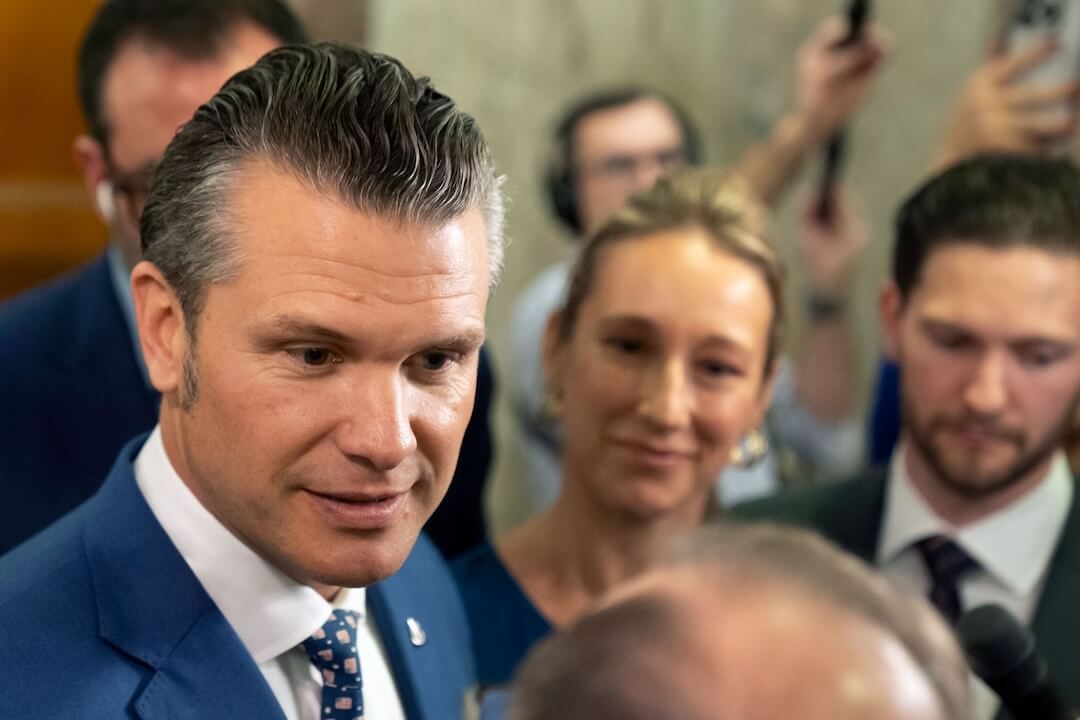Data visualization is becoming more popular by the day in news media. Particularly in a COVID-19 era, we’re consuming graphs, maps and charts galore, and journalists are now using data as a basis to analyze and visualize greater trends and phenomena that impact society on a worldwide scale.
But data can sometimes be deceiving. People view data as more objective than other information, but this isn’t necessarily true. Data depends on data gathering, on survey collection, on specific questions that look for specific answers. People trust data because it’s typically perceived as concrete fact — but when the right questions aren’t being asked, displaying misleading data marginalizes an entire group of people.
For decades, visualizations that display gender data have promoted a binary mindset, which marginalizes and excludes those who don’t identify as strictly male or female. Nonbinary concepts of gender are becoming more and more accepted, and the distinction between assigned sex and gender is finally being recognized on a societal scale.
Our data should reflect this.
I analyzed 40 articles published by The New York Times and The Wall Street Journal in 2020 that included data analyses or visualizations of gender-based data. Of these, only five — or 12.5% — included terms or specific data that accounted for people who identify as neither female nor male. Only more research will tell, but I suspect the results would be similar.
Stories that acknowledged nonbinary identities were typically focused on the LGBTQ+ community, and were consistently profile-centered, stylistic pieces, like this New York Times piece that dives into the cons of gender reveal parties (and is listed in the Times’ Style section). Data that focused on the 2020 election or COVID-19, though — which made up 43% of the articles analyzed and a huge proportion of this year’s news — always showed gender as a binary, like this Wall Street Journal visualization that analyzes the results of the 2020 election.
This sort of omission isn’t new. At its core, using data as a tool to present information is a flawed practice. Data has always been biased toward what society has historically defined as the norm: the cisgender, white male.
It’s been happening to women for centuries. Compiled studies of language and grammar textbooks from Germany, the United States, Australia and Spain found that men were three times more likely to be used in an example sentence than a woman. Our entertainment tells us this: A 2007 study of over 25,000 TV characters found that only 13% of nonhuman characters were female (and very, very few were nonbinary). Our news media shows us this: The Global Media Monitoring Project found in its 2015 report that “women make up only 24% of the persons heard, read about or seen in newspaper, television and radio news, exactly as they did in 2010.”
Women have historically been seen as the lesser sex, and society is just now beginning to dismantle the systems of oppression that have kept them subjugated. Feminist writer Caroline Criado Perez, in the foreword of her book “Invisible Women: Data Bias in a World Designed for Men,” summarizes the data gender gap in just a few words: “Whiteness and maleness are silent precisely because they do not need to be vocalized.”
We’re entering a space where society is beginning to recognize the existence of more than two genders — of a spectrum that includes transgender men and women, nonbinary, gender-queer and intersex persons. And while women are being recognized more and more in data analysis, other genders are not. Our data needs to start reflecting the existence of multiple genders. Otherwise, it further displaces an already marginalized and underrepresented community.
This isn’t an easy feat. It won’t happen overnight. Historical systems of information-gathering exclude genders not defined as male/female, including perhaps the most influential compilation of modern data: census data.
The Census Bureau has been collecting data on citizens practically since the U.S. was founded, yet still fails to include even an “other” option for gender. This not only reinforces a binary structure and makes it difficult for nonbinary individuals to complete — it also makes finding data that includes nonbinary persons incredibly difficult, even for organizations or media that want to include that data.
So, how do we, as journalists, data editors and designers, work to try to improve this system of data-gathering, particularly when so many factors are against us?
Here are some steps you might consider taking.
Contextualize your data.
If the data you’re using is structured around a male/female binary, that’s OK. It’s difficult to find trusted nonbinary gender data in a society that has been historically structured around the gender binary. We can’t magically make old data more inclusive. But if you are using this data, make a point to acknowledge that it excludes a specific group of people. Recognizing the problem in print is a step that brings us closer to implementing solutions.
Present all the data, no matter how small the margins.
Sometimes it can be difficult for designers to structure visualizations that include smaller ratios of data. Because individuals who don’t identify as male/female make up a smaller percent of those who do, it can sometimes be hard to present that data in a legible, visually appealing way. But we shouldn’t pick and choose what to display for visual aesthetics — include all sectors of data that recognize different genders, regardless of how small a percentage.
Choose nonrestrictive visualization tools to show your data.
Tools like bar graphs or pie charts are easy visualization choices, but they can sometimes be restrictive in showing data that’s smaller, or nonbinary. Several of the data visualizations I analyzed that showed gender as a binary used a stacked bar graph or pie chart. It can be more difficult to show smaller margins of data in these tools. So, get creative. Try using a bubble chart or a tree map or a visualization tool that allows for smaller margins to be shown in adequate ratios. Consider moving toward interactive visualizations which, along with being trendy and visually appealing, are a great tool for displaying copious amounts of data while keeping audiences interested And stay away from using gendered colors to present your data (i.e. blue for men, pink for women). Although it can be an easy norm to default to, it only further reinforces a binary mindset.
Consider making your own surveys to gather more inclusive data.
Sometimes the biggest obstacle in presenting inclusive data is finding inclusive data. Depending on the range and type of data you want to show, consider making your own surveys. This Wall Street Journal article, for example, shows binary data, but includes a poll of its own that gives the option to select “other” for gender. The designers here are doing a good job of showing the data that was available to them, and the inclusion of their own poll suggests their attempt to show more inclusive data.
Make your women’s sections more inclusive.
Of the articles I analyzed, several came from women’s sections of the papers, particularly the Times’ “In Her Words” section. All the data analyses here, though, still presented gender as a binary. I found this a bit surprising, and frankly disappointing. Modern women’s sections are meant to be an inclusive and progressive collection of thought, not a heterogeneous cis-women archive. Expand your women’s sections to be more inclusive of transgender women, feminine nonbinary people, etc.
Presenting accurate data is a basic journalistic responsibility. We should be striving for an all-encompassing vs. traditional approach.
Societal connotations of gender are changing, and one’s assigned sex may no longer define their gender identity. It’s important that modern journalism reflects this.
If we begin to implement a system where it is not the exception but the norm to include nonbinary gender identities within our data structures, it could considerably alter people’s mindsets about gender as a whole. The media is an instigator of change; it is responsible for framing the right questions in order to get better answers.
We need to start including all identities in our journalism, especially those who have been underrepresented and marginalized for centuries.
Narratives — including those created in the news — shape our understanding of the human condition, like the way we express and understand different gender identities. As modern journalists, we must help to craft narratives that are empathetic, diverse and inclusive — and we can start by restructuring the gender narrative.







